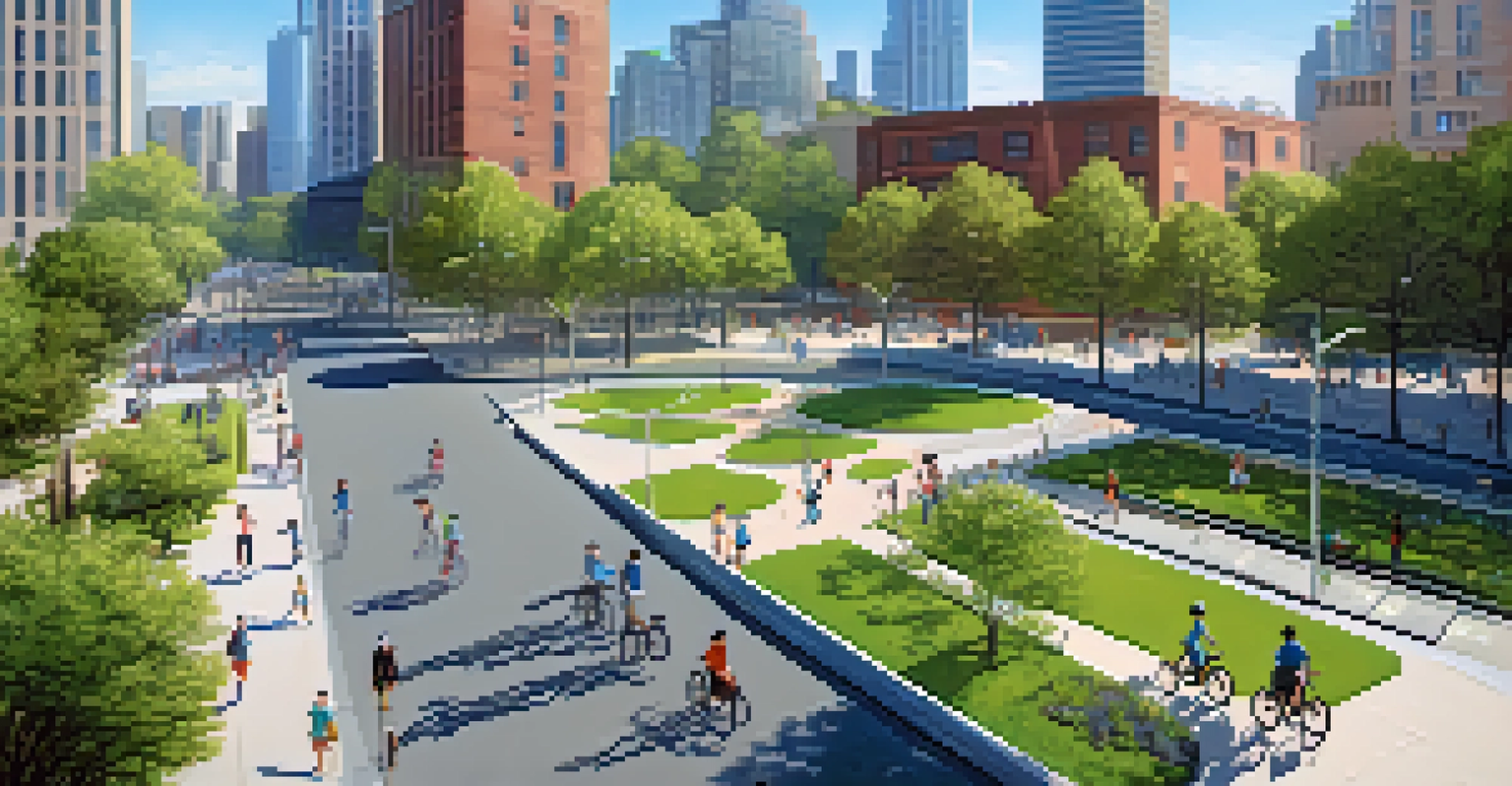Traffic Management Strategies in New York State's Cities

Understanding Traffic Management in Urban Areas
Traffic management is crucial for enhancing mobility and safety in urban environments. It involves planning and implementing strategies to control vehicle and pedestrian flow effectively. In New York State's cities, the unique challenges posed by dense populations and limited road space make this an even more pressing issue.
The car is the ultimate symbol of freedom, but it can also be the ultimate symbol of congestion and frustration if not managed properly.
By analyzing traffic patterns, cities can identify bottlenecks and optimize traffic signals to improve overall flow. This not only reduces congestion but also minimizes travel time for residents and visitors alike. Understanding the local context is essential for tailoring effective strategies.
Moreover, successful traffic management goes beyond just vehicles; it encompasses all road users, including cyclists and pedestrians. A well-rounded approach ensures that everyone can navigate the city safely and efficiently.
The Role of Technology in Traffic Management
Technology plays a pivotal role in modern traffic management strategies. Cities are increasingly using smart traffic signals, real-time traffic monitoring, and data analytics to manage flow. By harnessing this technology, New York cities can respond quickly to changing conditions and optimize traffic in real-time.

For instance, adaptive traffic signal systems adjust their timing based on current traffic volume, thus reducing wait times and improving efficiency. This is particularly beneficial during rush hours when congestion peaks. The use of apps that provide live traffic updates is another example of how technology enhances commuter experience.
Technology Enhances Traffic Flow
Smart traffic signals and real-time monitoring help cities manage congestion and improve commuter experiences.
Additionally, technology enables cities to collect valuable data, which can inform future planning and infrastructure improvements. This data-driven approach ensures that solutions are not only effective but also sustainable over the long term.
Public Transportation as a Traffic Management Strategy
Investing in public transportation is a key strategy for effective traffic management. In cities like New York, a robust transit system can significantly reduce the number of vehicles on the road. By encouraging residents to use buses, subways, and trains, cities can alleviate congestion and lower emissions.
Public transportation is the backbone of urban mobility; when it thrives, cities thrive.
Moreover, expanding public transport options makes it easier for people to commute without relying solely on personal vehicles. This shift not only benefits the environment but also enhances overall mobility. Cities can implement more frequent service and improved routes to attract more riders.
Public transportation initiatives, such as dedicated bus lanes, further streamline traffic flow. When buses can bypass congested areas, they become a more attractive option for commuters, leading to a win-win scenario for both the city and its residents.
Encouraging Non-Motorized Transportation
Promoting walking and cycling can significantly contribute to traffic management. Cities can develop bike lanes, pedestrian paths, and safe crossings to encourage these modes of transport. By prioritizing non-motorized options, New York's cities can create a more balanced and sustainable transportation ecosystem.
Additionally, integrating bike-sharing programs can make cycling more accessible and appealing to residents and tourists alike. These programs not only reduce reliance on cars but also enhance public health by encouraging physical activity. Cities can also host events that celebrate walking and cycling to foster a culture of non-motorized transportation.
Public Transport Reduces Congestion
Investing in robust public transit options encourages residents to leave their cars behind, alleviating road traffic.
Creating a friendly environment for pedestrians and cyclists leads to safer streets for all users. As more people opt for these alternatives, traffic congestion can decrease, and the overall quality of urban life improves.
Traffic Calming Measures in Urban Design
Traffic calming measures are essential in urban design to enhance safety and reduce speed. These can include speed bumps, narrowed streets, and raised crosswalks, which encourage drivers to slow down. In New York cities, implementing such measures can lead to safer neighborhoods and a better quality of life.
By redesigning streets with pedestrians in mind, cities can create more inviting public spaces. This encourages community interaction and makes neighborhoods more attractive to residents and visitors. Traffic calming also helps to protect vulnerable road users, such as children and the elderly.
Moreover, these measures can have a positive impact on local businesses. When streets are safer and more pedestrian-friendly, foot traffic increases, benefiting shops and restaurants. It's a straightforward way to enhance both safety and local economies.
Data-Driven Decision Making in Traffic Management
Data-driven decision-making is transforming how cities manage traffic. By analyzing traffic patterns and behaviors, city planners can make informed choices about infrastructure and policies. This allows for targeted interventions that address specific problems rather than relying on guesswork.
For example, data collected from traffic cameras and sensors can reveal peak congestion times, helping cities adjust traffic signals accordingly. Furthermore, feedback from residents can also guide planning efforts, ensuring that strategies align with community needs. Involving the public in decision-making fosters a sense of ownership and cooperation.
Collaboration Drives Effective Solutions
Engaging stakeholders and the community fosters comprehensive traffic management strategies that address local needs.
Ultimately, leveraging data not only enhances traffic management but also builds trust between the community and local government. When residents see tangible improvements based on their input, they are more likely to support future initiatives.
Collaborative Approaches to Traffic Management
Collaboration among various stakeholders is crucial for effective traffic management. City officials, transportation agencies, and community organizations must work together to develop comprehensive strategies. By pooling resources and expertise, cities can address traffic issues more holistically.
Engaging the community in discussions about traffic management ensures that diverse perspectives are considered. Public forums and workshops can provide valuable insights into residents' experiences and preferences. When people feel heard, they are more inclined to support initiatives that affect their daily lives.

Moreover, partnerships with local businesses and organizations can lead to innovative solutions. For instance, incentivizing carpooling among employees or supporting flexible work hours can help reduce peak-time congestion. Collaborative efforts create a shared responsibility for improving urban mobility.